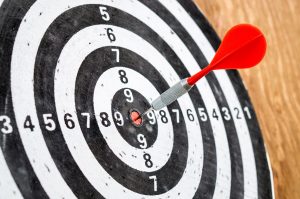Step by step Guide to Perform On-Page SEO
Complete guide on On-page SEO process for your website, to help it get on the First page of Google search results
In this article we will go over the best way to optimize your site, here is an outline for this on-page SEO guide :
-
- Comprehensive Audit
- Setting Goals & Timeframe
- Keyword research
- Performing On-page SEO
- Meta tags (keyword phrase, title tag, meta description, URL)
- Improving Page Speed
- Internal Linking
- Content Audit
- Recommendations
First of all, allow me to refresh you on SEO definition prior diving into this step-by-step guide. SEO is a strategy of optimizing your website to help it rank high on Google search pages organically (without paying Google). If you would like to read more about SEO, how it works and what are the benefits of search engine optimization, please read our What is SEO? blog. Or if you are looking to learn more on SEO trends in 2021, we have an article dedicated to that matter, here.
1. Comprehensive Audit
To make sure your SEO is systematic and effective, you need to set clear goals and write a detailed plan on how those goals will be reached. You would need to ask yourself a lot of questions starting from your ideal customer (target audience), your market (set Geolocation or online only), your unique selling proposition (what differentiates you from competition), who are your main competitors (especially those who are doing better than you) and set realistic time frame to accomplish your search engine optimization. Let’s do it together on the example of Photography Studio in Seattle, WA, to make it easier to understand.
-
- Business Name: Best Family Photo (not real business, came up just for a sake of this Blog)
- Targeted Location: Greater Seattle Area, more specifically Seattle, Bellevue, Redmond, Kirkland, Bothell. Since our Photography Studio is targeting upper middle and upper class by household income, we selected those smaller cities around Seattle where median Family income is above $250k/year.
- Unique Selling Proposition (USP):
-
-
-
- 12 years in business
- 142 Google 5-star reviews
- 172 Yelp reviews with average 4.8-star rating
- Prices are 10-20% lower than competition
- Photoshoots available both in studio and outdoors
- Large variety of Unique Props
-
-
-
-
- Target Audience. Since we are describing SEO strategy for a Family Photo studio, we understand that our audience would probably be 90% female, ages between 30 and 50, who are happily married, have kids and love photography and reside in neighborhoods around Seattle mentioned above. They also love to hang canvas prints with their children on them around their house (who doesn’t?), send out Christmas Family Greeting cards every year and make sure their kids have every milestone photoshoot since they were born, you get the idea…
Of course, there will be plenty of others interested in photography; man and woman of all ages, locations and incomes, but in this example, we were describing “ideal targeted” customer for SEO, and had no intent to discriminate anyone.
-
- Main Competitors. Those are pretty easy to find, you can use one of the paid tools like SemRUSH.com, SpyFu.com or you could use Google search for free and look for similar photography Studios in the area who offer similar services in the same price range. Look at their websites, compare prices and quality and establish who is and who is not your real competitor. We recommend finding at least 5, preferable 10 competitors and analyzing their websites. From web design, color panel, calls to action, services offered, portfolio quality, price range etc. You can also check their SEO and Domain authority score on Ubersuggest and see who has the strongest SEO score would be the most likely example for you to follow.
Using paid tools definitely makes the process easier and shorter, you can literally just enter your website URL and get your top competitors by keywords and top competitors by backlinks, pick 10 most relevant ones and you are done. But if you are not planning to spend any dollars on research and have extra time it definitely can be done completely free. Just allow yourself time to analyze search results and put together a relevant competitor list.
2. Setting Goals & Timeframe

SMART goals, prior to finalizing your SEO goals check your site’s current SEO position, website domain score, keywords you are already ranking for. It is important to know where you start in order to track progress and keep advancing going forward. Even though our photo studio is open for business for over 12 years, they just recently upgraded their website and it is relatively new, with only 100 organic visits per month with 3 people actually booking. This brings it to a conversion rate of 3%.
Now when we have clear understanding of our current standing, competition and market we are able to plan On-page SEO and realistically forecast its impact on your traffic. Therefore, Best Family Photo Studio’s goal is to improve organic traffic to 500 visits per month in next 6 month. Also, to increase conversion rate to 5% or 25 organic conversions a month with help of quality SEO and target keywords.
Timeframe. For initial on-page SEO and Local SEO, plus all the technical aspects and research it can take up to 2-3 weeks or even longer if you are doing it in between servicing your customers and attending kids’ games on the weekends. If you are fully dedicated to it, can be done in a week, considering you have a small business and relatively small website (under 20 pages). Your off-site SEO would take longer, it requires link building, reviews, social media engagements. Even though, it doesn’t require as much time to set all this up, it does take time to get reviews, links and social media sharing in order to generate positive SEO impact. To make the long story short, if you are lucky you can get on the first page of Google search result in 3 months, more often it happens within 6-12 month period.
3. Comprehensive Keyword Research

Once your audit is complete and your goals are clear it is time to start optimization, wait maybe not quite yet. There is one more research you need to do a deep dive in, so you can use it in all further SEO steps and beyond. Yes, you guessed it, it is comprehensive keyword research Definition of keyword research is the process of discovering words and phrases (aka “keywords”) that people use in search engines, like Google, Bing and YouTube when looking for products or services similar to yours. Researching keywords help you better understand your target audience, it gives you insight into what customers are searching for and the exact words and phrases that they use.
Tips to successful Keyword Research:
-
- Look at current keywords your pages are currently ranking for
- Look at competitors keywords, what are they using, which keywords bring them most of their traffic, it is ok to borrow some of them, sharing is caring at the end of the day…jk
- Use Google keyword planner (free tool) and check suggestions google makes based on the enormous search query library it possesses on every single topic you can imagine.
- Another easy way is to start typing your products into search engine tab and analyze all the automatic suggestions it would populate below your query
- After you entered your search term and ran query, look on the bottom of the Google page for Related Searches, which usually have some great long tail keyword ideas for your Keyword list
- At this point you should have a pretty good list of keywords and keyword phrases you can use in your optimization, as a rule we recommend 2 keywords per page. And to make it clear Keyword is not just single word, it can be one word or a phrase with up to 7-8 words in it, but for ease of explanations SEO community calls all of them just Keywords.
- Finally, it is time to convert your final keyword list into long tail keywords to make it easier to rank plus use more precise targeting of search queries.
Same as first step, this process could be done completely free by using Google search, Google Keyword Planner, analyzing your competitions pages and applying common sense. Or could be also done with any of the mentioned above SEO tools, which would make this process much easier, but would still take a little time and effort as all of those tools are pretty complex and require at least basic understanding of what you are trying to do.
Back to our favorite photo studio example – Best Family Photo, let’s go through real examples of keyword research we described above. Since our website is relatively new and barely optimized, only main page has some basic SEO and ranks for following keywords
-
-
- Photography Studio
- Family Photographer
- Family Photoshoot
- Studio in Seattle
- Best Family Photo
-
Not much, but it is a start. Next, we will look at our competitors keywords and determine those that we can “borrow” and improve, here is what we found out:
-
-
- Family Photography Seattle
- Photographers near Seattle
- Outdoor Family Shoot
- Family Photography Portfolio (for portfolio page)
- Contact Photographer Seattle (contact page)
-
Getting better quality keywords already and now heading to Google for Search Suggestions and Related Searches, let see what we can find:
-
-
- Best Family Photography Seattle
- Cheap Family Photography Seattle, WA
- Family portrait session near me
- Newborn photography Seattle (since our photography studio offers those also)
- Family and Newborn photographer near me
-
Now, we have 3 sets of keywords, which we will enhance into a final list that we will use for further optimization. For a sake of example, I am only showing 6 keywords; if your website has 15 pages, you should roughly have 30 keywords (amount of pages times 2 keywords per page). Here it is our final longtail keyword list for Best Family Photo:
-
-
- Best Family Photography Studio Seattle
- Family and Newborn photographer near me
- Outdoor Family photoshoot near Seattle
- Newborn Photographer Bellevue, WA
- Family portrait photography near me
- Best Photographer for Outdoor Photoshoot near Seattle
-
Final list looks great, strong longtail keywords that cover majority of our services, plus they are specific enough to make your pages rank higher on Google, than if you used just “Family Photography” as that keyword broader and has much higher search volume, thus harder to rank for. This concludes our research part and we are excited to start our website optimization.
4. On-page SEO

On-page SEO is the process of optimizing individual web pages of your website in order to rank higher and earn more relevant traffic in search engines. This is part of SEO you have full you have control over (unlike Off-page SEO) and consists of following elements: meta tags, site loading speed, internal linking and quality content.
SEO Meta Tags
Meta tags are snippets of text that describe a page content; they do not appear on the page itself, but only in its source code. Meta tags are essentially little content descriptors that help tell search engines what a web page is about.
Easiest way to explain them would be going straight to Best Family Photo example and creating Meta tags for the home page. Here we will be covering title tag, meta description, URL and more.
Title Tag – this element specifies title of your web page and tells search engines what title to display on SERPs (search engine results pages). Title Tag recommendations:
-
-
- Add a title tag for each webpage
- Avoid long headlines — under 60 characters is best
- Avoid generic and vague titles, e.g., “Home” for the homepage
- Use title case or sentence case
- Match search intent
- Avoid clickbait titles
- Include a target keyword when appropriate
- Create a distinctive title tag for each page on your site
-
Title Tag for Best Family Photo: Best Family Photo Seattle / Professional Photography Services
Meta description – summarizes the content of the webpage for search engine crawlers and internet users. It appears below the title tag on the search engine results page. Recommendations for writing Meta descriptions:
-
-
- Keep it under 160 characters
- Create distinct summaries for each page
- Avoid duplicate meta descriptions on your website
- Use sentence case
- Be accurate, descriptive, and concise
- Match search intent
- Only include your target keyword where it makes sense
-
Meta description for Best Family Photo: Newborn and Family Photographer in Seattle Area, Specializing in Outdoor and Studio Photo Sessions and Serving Bellevue, Redmond, Newcastle, Kirkland and more
Robots Meta Tags – are additional values or parameters placed within an HTML tag. Robots meta tags provide search engine instructions on whether you’d like them to crawl or index parts of your website. All the pages and links you create on your web pages are indexed by search bots and web crawlers by default. Some common parameters include: Index, Noindex, Follow, Nofollow, No archive.
Headers Tag is HTML element used to define headings on your page. H1 is the main header tag, it is usually used for the title of the page. Do not use H1 tag more than once per page, as it will confuse search engine and your SEO will be less effective. As alternative you can use H2, H3, H4 header tags multiple times on the same page, which will help structuring your page layout.
Site Speed
Next step in on-page SEO process would be testing site speed and finding out if your site needs speed boost. It is very important for any website to load in under 2 seconds on both desktop and mobile phone. As if the sight is too “heavy” and slow it might prompt your visitor to close the browser even before site loads up. Stats confirm over 82% of users leave page if it loads in over 2 seconds. We live in the time when no one wants to wait, therefore have to increase your site loading speed. It is a huge factor of your on-page optimization.
To check your website loading speed please use following link by Google, it shows both desktop and mobile speed for your website. As a rule, your desktop loading speed will always be slightly faster than mobile speed. If your site is getting 70 and above for both, you are in decent shape. Can use some improvements, but not critical. If it is under 70, especially on mobile loading speed – optimization is needed. Improve your site’s speed and help it rank higher on Google search results. On the speed test page you will also find recommendations from Google on how to improve site loading speed. Go through them and adjust one by one.
When optimizing for speed look for large files imbedded into pages. Usually that is images and videos and they need to be optimized. There are many ways to resize your images with variety of different tools prior to loading them to your site. Even when they already there, use smart plugins that can resize all your videos and images at once. If your site was developed in WordPress.com, here are the plugins to use for speeding up your loading speed:
There are many different options and plenty of free ones which will help you to optimize your sites overall speed. As well as images and videos, please make sure to watch/read detailed tutorials for those plugins online. It is pretty easy to do it when you know where to click and what options to select. But if you don’t know how to use the plugin; you can accidently turn important features off, which can break your site. So please watch tutorials, plenty of them available on YouTube.com and just follow them step by step.
Internal Linking
Internal Links are hyperlinks that target the same domain as the domain that the link exists on source. Or explained in simple words, an internal link is one that points to another page on the same website.
It is very important factor of your SEO and for your site visitor experience while browsing your website. If we are taking about home page it should have links to all other main pages through the menu buttons. As well as many more links through the page and in the footer. Depending on your homepage layout you should have another 10-20 links in between. For example, block where you describe your services is linked directly to service page. Pricing linked to packages and options, contact us linked to contact form, etc.
Another excellent way to link your website internally is through the sidebars. It helps you customers browse and click through the pages much easier as well as reduces your sites bounce rate. Usually, you would not use sidebars on the home page, but pages like services, portfolio, packages, BLOG. Certainly, it would improve your visitors navigation experience. As they would be able to jump from one page to another page with just one click.
Content Audit
This step includes checking your website pages for content size (number of words per page), its quality and relevance. First of all, be aware that Google prefers text over pictures and videos. It doesn’t mean that pictures and videos are bad for your rankings. No, actually opposite, they do help but as long as your page has enough text on it. General recommendation for any page to have at least 300 words, and when it is a Blog at least 1,800 words.
When adding images to your pages make sure they have proper titles, descriptions and alt tags it also helps your overall SEO score, as everyone loves images, it increases time spent on website and reduces bounce rare.
After optimizing images, look through your articles, pages, and text blocks you have throughout the site, are they still relevant? Do you have information indicating 2017 when we are in the middle of 2021? It can be considered outdated and not relevant; therefore, your site can lose SEO juice and rank lower. When auditing your content pay special attention to proofreading all the material as misspelled words can be another reason of losing credibility and authority in search engine’s eyes.
We recommend adding FAQ (frequently asked questions) and/or Blog pages to your website, as those are a huge part of content SEO and can be a part of ongoing optimization which will simultaneously add authority and credibility to your website. Please feel free to check our Secret Sauce to Blog writing guide here, which includes 19 secret ingredients of perfectly written for SEO Blog post.
Content is king, if you decide to add a Blog page, make sure to do it right. Provide value and quality, solve problems for your customers and you will be rewarded with higher SEO rankings. Do not stuff keywords, copy paste information from more credible sources, write short and shallow articles, it won’t help. Search engines are smart, they are trained to find and penalize websites that are offering poor or stolen content.
5. Recommendations
It is fascinating how many things go into SEO and even more goes into Google’s site ranking algorithm. Google bots crawl and index your site and ultimately give it SEO ranking. They also decide what spot you will earn on its SERPs. Will your website show on the first page and receive a lot of quality leads? Or will it appear on page five and struggle to get any organic traffic?
Things to remember and keep in mind, SEO is not a sprint, it is a marathon. It can take anywhere from 6-12 months for a successful optimization strategy to get to the first page. And it certainly requires a lot of time, effort, ongoing optimization, getting positive reviews, content shares, blogging, and more.
Besides On-page SEO steps we discussed in this article you would need to perform Off-Page SEO and Local SEO. Which will help you maximize your web traffic. All three together will give you best chance to get to the desired first spot in organic search results. We will discuss other parts of SEO in upcoming articles, but now use this On-page SEO guide to start optimization. Follow this guide, and you will increase chances to stand out online and get tons of organic traffic.
Vadym P 2/5/21

